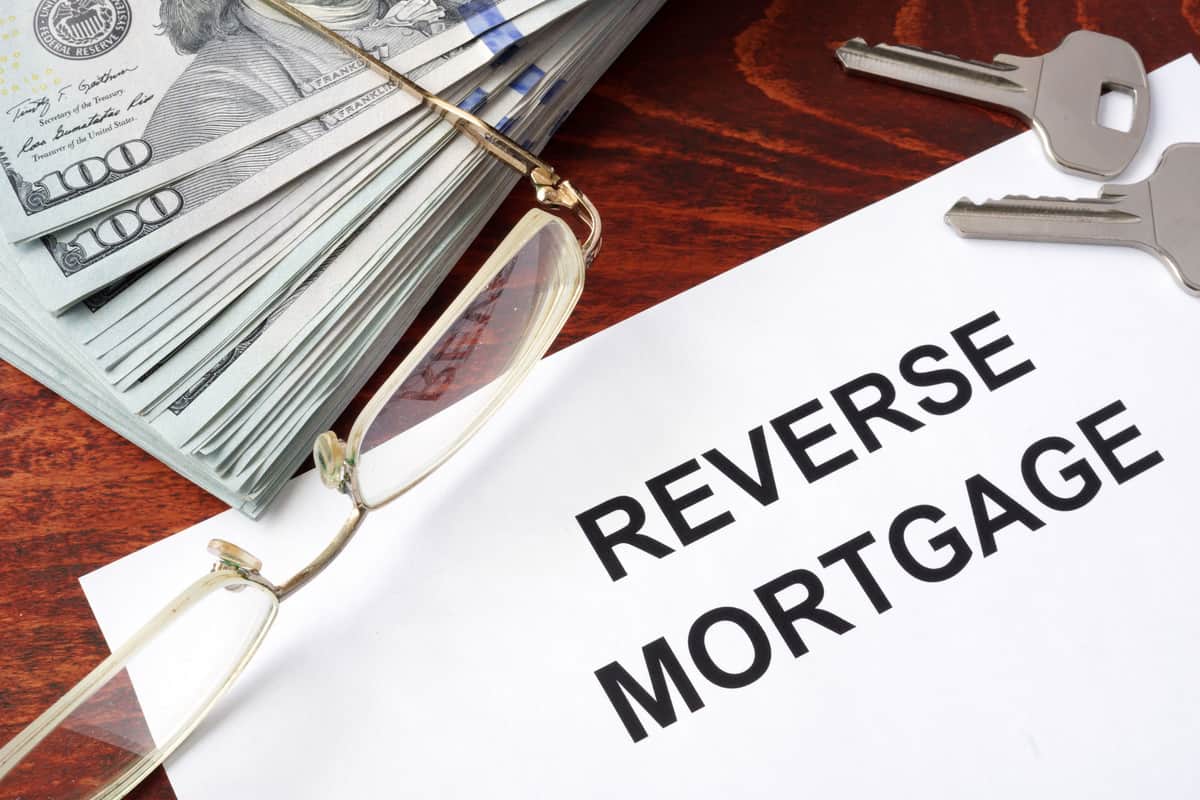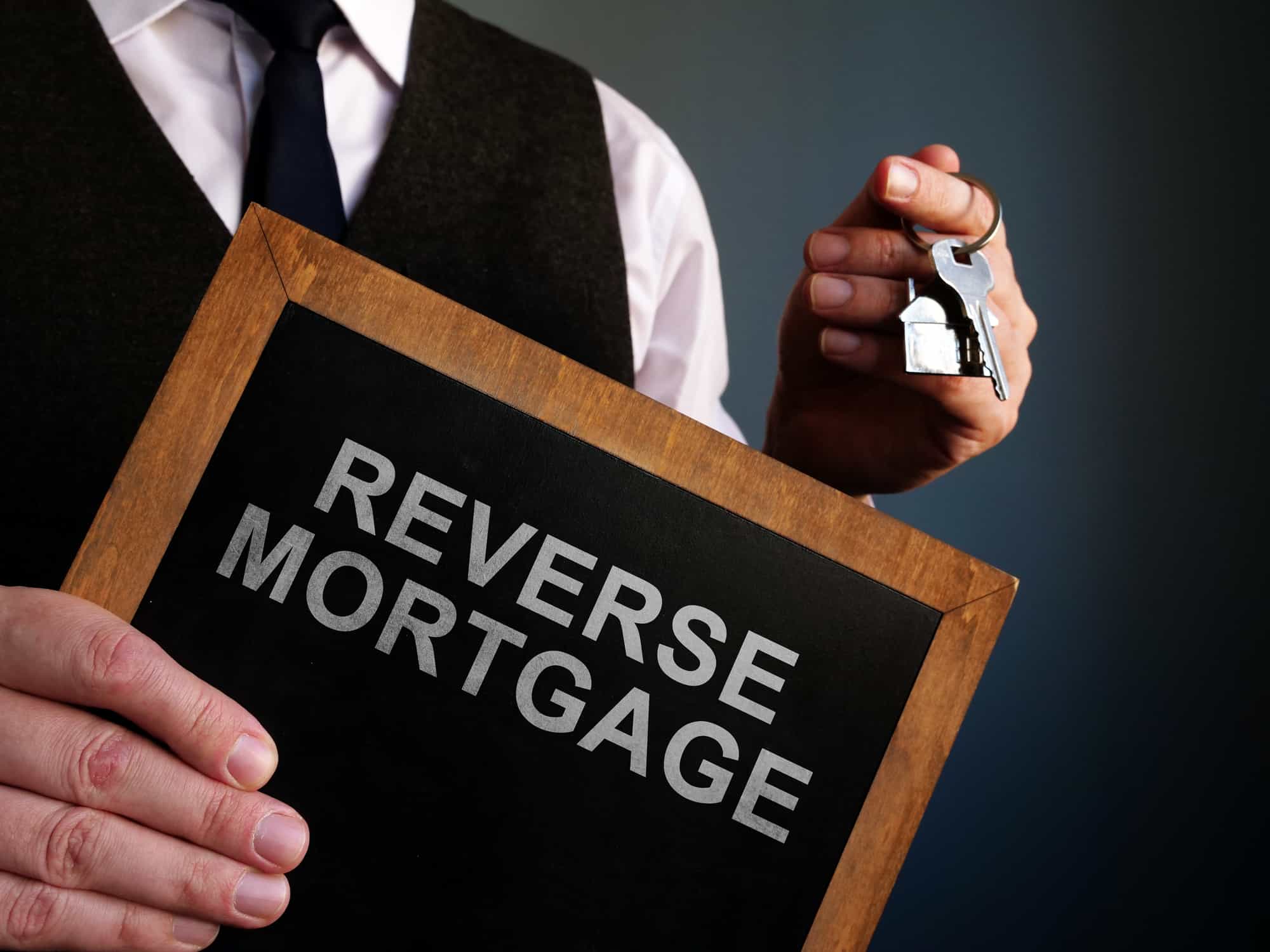For many seniors, they have spent their whole life-saving money for retirement and making mortgage payments. The plan was to have enough money saved to enjoy an idyllic retirement with the house paid off. What many seniors are finding with the rising health care costs and living longer is that they are short of funds. They find themselves worrying about making their money last.
You might have heard the late-night tv ads for reserve mortgages and wondered if this is a solution to your money concerns.
Wondering what is a reverse mortgage and how does it work? Read on to learn the ins and outs of reverse mortgages, how they work and if they are the right choice for you.
What is a Reverse Mortgage?
A reverse mortgage is a way for people who are 62 years and older to tap into their home’s equity. The reverse mortgage loan allows you to take a lump sum of money from the equity of your home.
If your home still has a mortgage, you must first pay off the existing mortgage. This allows the homeowner to eliminate monthly mortgage payments.
You still own your home and you don’t make payments. When the home is sold, you must pay back the money from the reverse mortgage. The homeowner is still expected to pay homeowners insurance and property taxes for the home.
How is Reverse Mortgage Different?
In a conventional mortgage, the homeowner borrows a lump sum of money to purchase a home. This lump sum has agreed upon terms like how long the loan will last and the interest rate.
Each month the homeowner makes monthly payments and over time the traditional mortgage amount decreases in value by making those monthly payments.
A reverse mortgage does the reverse. A homeowner borrows a sum of money based on the home’s equity. They do not make payments on the loan, so based on the interest rate, the loan amount increases over time. Then when the home is sold, the money is used to pay off the reverse mortgage.
How Does a Reverse Mortgage Work?
Let’s break it down simply. Here is how a reverse mortgage works:
- Use the home’s equity
- Access fund that is based on the age of the youngest borrower who owns a stake in the house
- No monthly payments are required
- Tax-free funds can be used without restrictions
If there is remaining equity from the sale of the home, it can go to either the homeowner or heirs if the homeowner is no longer living.
Reasons to Consider a Reverse Mortgage
If you work your whole life to pay off your mortgage, why would you consider creating another mortgage on your home? There are many reasons seniors consider obtaining a reverse mortgage:
- Eliminate monthly mortgage payments
- Consolidate their debts
- Pay for in-home care
- Home improvements
- Supplement their income
- Create an emergency fund or increase their savings
- Protect home equity from declining home markets
Reverse mortgages give seniors more access to cash, often that is needed for care and living expenses. Since many seniors have large amounts of their net worth tied up in their mortgage, this allows them to access those funds.
Types of Reverse Mortgages
Like a mortgage for a first time home buyer, there are a variety of different types of reverse mortgages to consider. Let’s take a look at types of reverse mortgages:
Proprietary Reverse Mortgages
Proprietary reverse mortgages are mortgages not backed by the government but instead by a private reverse mortgage lender. This type of loan often allows a homeowner to obtain more money because there are no restrictions. This is especially true if the home is of a higher value.
Single-Purpose Mortgages
This type is a little rarer than the others. The mortgage would come from either a non-profit agency or a state or local government. The caveat to this type of reverse mortgage is that is must be used for a single purpose designated in the terms of the loan.
Home Equity Conversion Mortgages
The most widely used and popular choice for a reverse mortgage is the Home Equity Conversion Mortgage or HECM. This type of mortgage is backed up by the U. S. Department of Housing and Urban Development or HUD.
There are pros and cons to this type of reverse mortgage. There are higher upfront fees. All borrowers on the mortgage are required to meet with HUD counselor to be certain they understand the terms of the mortgage and its implications.
The HECM loans can be used for any purpose, so they don’t have restrictions on use and they are backed by the government.
HUD does have restrictions and considers your age, the value of the home and the equity when determining a loan amount. The 2020 limit for reverse mortgages from the HUD is $765,600. The loan terms are based on current interest rates and also the age of the borrowers. The older you are generally the more money you can get.
Payment Options With Reverse Mortgages
When a senior takes out a reverse mortgage, there are several ways they can get the money from the mortgage. Let’s take a closer look at those options.
They can choose to draw the funds in one lump sum. If you take a fixed-rate reverse mortgage, the money must be taken in one lump sum instead of in draws as needed.
Another option for the reverse mortgage is to establish a line of credit against the equity. This option allows the borrower to draw from the line of credit as needed.
Kind of like term insurance, another option is the term payment reverse mortgage. This means the borrower gets a set amount of funds for a set period of time.
A tenure payment loan gives the borrower a guaranteed payment for life. This allows them a certain amount
of money for the time they remain living in the home.
Reverse Mortgage Versus Home Equity Line of Credit
So, you might be getting confused with the terminology. How are a reverse mortgage, a home equity loan and home equity line of credit (HELOC) different?
First, off you must be 62 to access the equity in your home from a reverse mortgage. Remember too, if you take out a reverse mortgage, you don’t make payments. It gets paid back when you sell the house or are deceased.
A home equity loan doesn’t have the age restrictions of a reverse mortgage. You can borrow a lump sum of money to do some home improvements from the equity in your home. Your existing mortgage also does not need to be paid off to get a home equity loan.
A HELOC is similar to a home equity loan. However, instead of taking a lump sum from the loan, you can draw from the line of credit. It also does not have the same restrictions that a reverse mortgage has.
As a borrower, you can also shop for the best home equity loan and interest rate like you would for a regular mortgage.
Associated Fees from a Reverse Mortgage
The most common type of reverse mortgage is the home equity conversion mortgage or HECM. There are some significant fees to be aware of with this type of mortgage.
The first fee is the mortgage insurance premium or MIP. A 2% MIP fee is charged at the time of closing. Additionally, a half percent is charged annually on the balance of the mortgage amount.
Lenders also charge 2% or $2500 on the first $200,000 and then an additional 1% over the $200,000 in origination fees. The Federal Housing Administration or FHA caps these fees at $6,000.
There is also a monthly service fee tacked on to the life of the mortgage. This is either $30 for the fixed-rate or $35 for the adjustable-rate mortgage.
You should also expect fees for appraisals, title searches, insurance, and inspections.
Pro and Cons of Reverse Mortgages
When considering if a reverse mortgage is the right choice for you, do your homework. There is without a doubt, some pros and cons to reverse mortgages.
The Pros
- No more monthly mortgage payments which opens up cash flow
- Lump sums can be used for things like health care, living expenses, long term care and repaying debt
- Cash flow for things like travel and retirement hobbies
- Stop foreclosure by paying off a mortgage with the reverse mortgage lump sum
A reverse mortgage allows the senior to use the equity they have built up in their home for their own needs versus it going to their heirs upon their death.
The Cons
Without a doubt, there are some negatives that should be closely considered before taking on a reverse mortgage.
- Still must pay property taxes and homeowners insurance
- Lose the equity in your home which is often a source of wealth for those over the age of 62
- Closing costs and fees can be steep
There are also some scams associate with reverse mortgages. If you are not confident you understand the risk associated with a reverse mortgage or don’t understand the fine print, seek the advice of a trusted family member, attorney or financial advisor.
Understanding What is a Reverse Mortgage and How Does It Work for You
A reverse mortgage gives an older homeowner the option of using the equity they built for their own use. It does come with some pitfalls.
It’s important to understand what is a reverse mortgage and how does it work before signing on the dotted line.



